| Becky Welander |
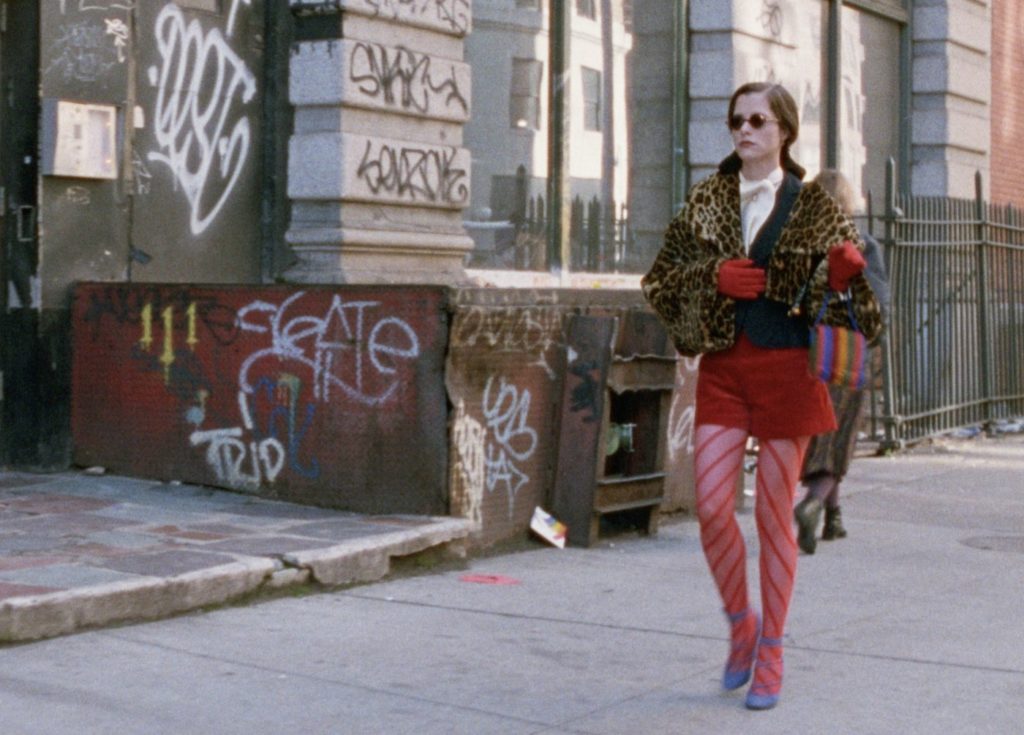
Party Girl plays at the Trylon Cinema from Sunday, June 4 through Tuesday, June 6. Visit trylon.org for tickets and more information.
I was re-watching some of the early seasons of Project Runway recently, discovering that in Season 6, Episode 7, Michael Kors comments with disgust that one of the designs looked like a librarian from 1979.
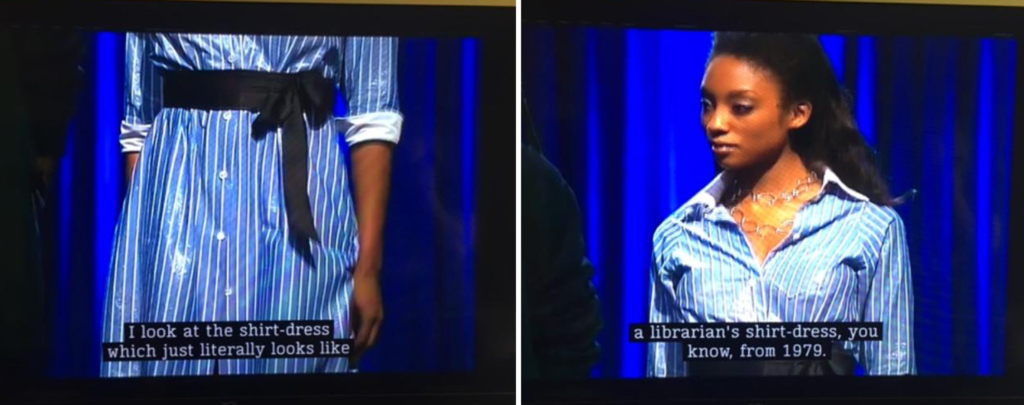
Michael Kors is certainly not the first or the last person to express disdain for librarians and their style. Just look at what could have become of Mary in It’s a Wonderful Life if she’d had a career as a librarian rather than being a housewife.
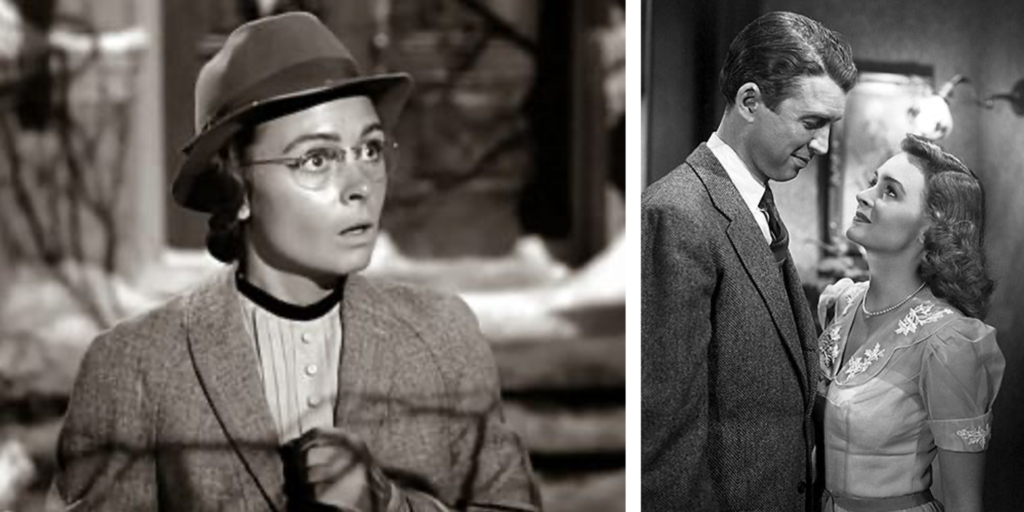
Somehow these stereotypes about single women being lonely shrews (this is the same garbage that many members of the-only-path-to-happiness-for-women-is-marriage-and-motherhood GOP would still like us to believe) and librarians being unfashionable shrews still persist over 75 years later.
Party Girl, released in 1995, manages to be one the greatest movies about librarians and fashion at the same time.

One time when I was around ten years old, I was expounding to my mother about my love of reading. My mom, who has a degree in education with a minor in library science, suggested that I might want to be a librarian when I grew up. I was horrified. I told my mom that librarians were boring and ugly. I wanted to be a fashion designer or a zookeeper.
I grew up in a rural area that didn’t have a public library. The only library in my town was my school library and our librarian was a man. My opinion about librarians could only have come from tv and movies (although not from It’s A Wonderful Life; I saw that movie for the first time when I was in my 20s).
When I started college and needed a job, my roommate suggested that I get a job in a library. Her dad had been an academic librarian, and she said that librarians were “cool.” It turns out she was right. I got a job in at my college library and started my 20+ year career working in libraries.
Party Girl came out while I was still in college. One of the librarians I worked with saw it, loved it, and told me I needed to see it. I couldn’t even begin to guess how many times I’ve seen it since. Party Girl is the story of Mary, a NYC party girl who ends up working for her godmother, Judy, as a library clerk after Judy bails her out of jail.
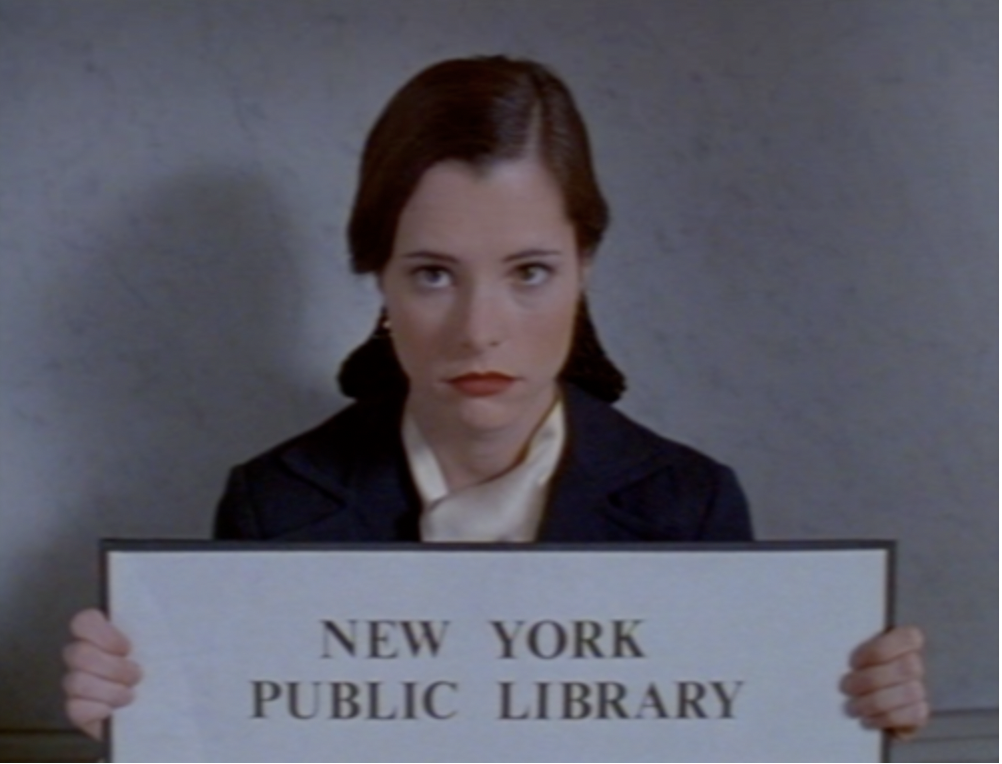
Party Girl manages to both celebrate and defy those long-held stereotypes about librarians and their style. Judy, in many ways, is the stereotype. She is middle aged, shushing, and humorless. Her style reflects how professional women are told to dress if they want to be taken seriously: Camouflage your figure with neutral, simple garments and draw attention to your face with a scarf or jacket.
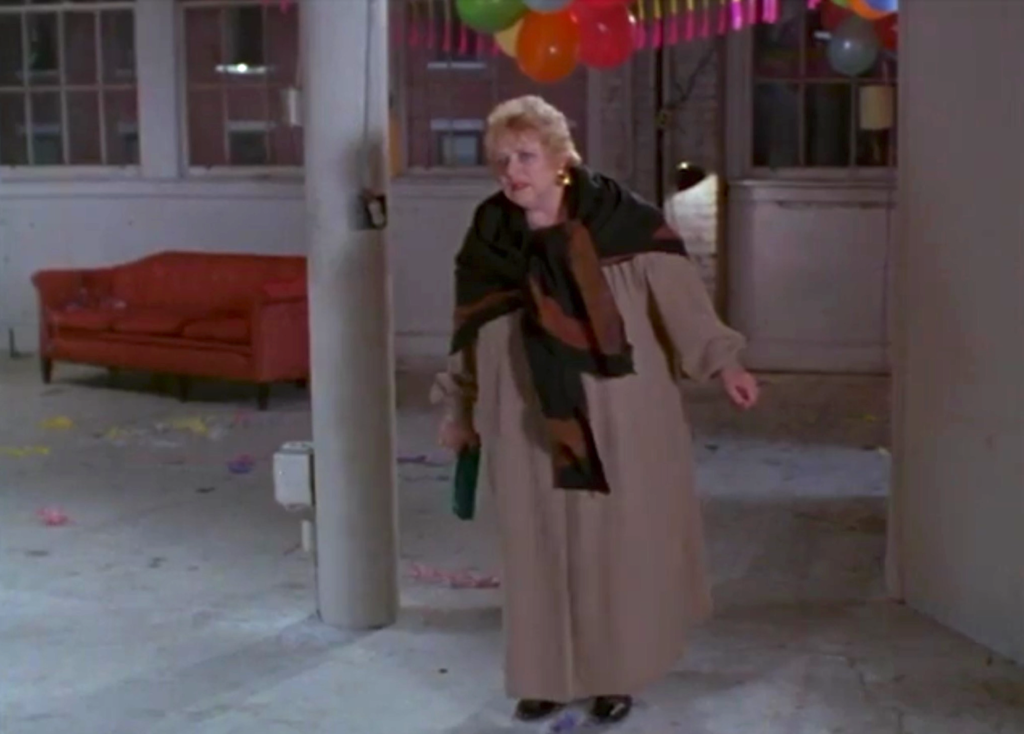
Judy is judgmental about free-spirited Mary and her lifestyle. She is often unsympathetic and harsh with Mary. Judy’s greatest moment in the film comes when she expresses her frustration with the ways in which librarians are undervalued and underpaid for no other reason than it is a profession largely held by women.
Mary defies the stereotype. She is young, fun, and her personal style is a fabulous mélange of vintage and designer garments.
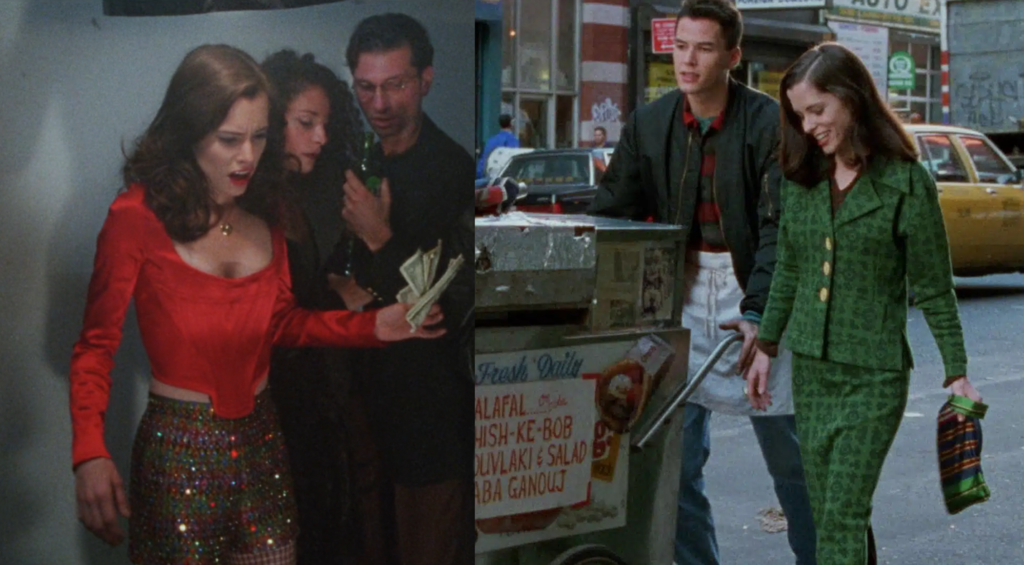
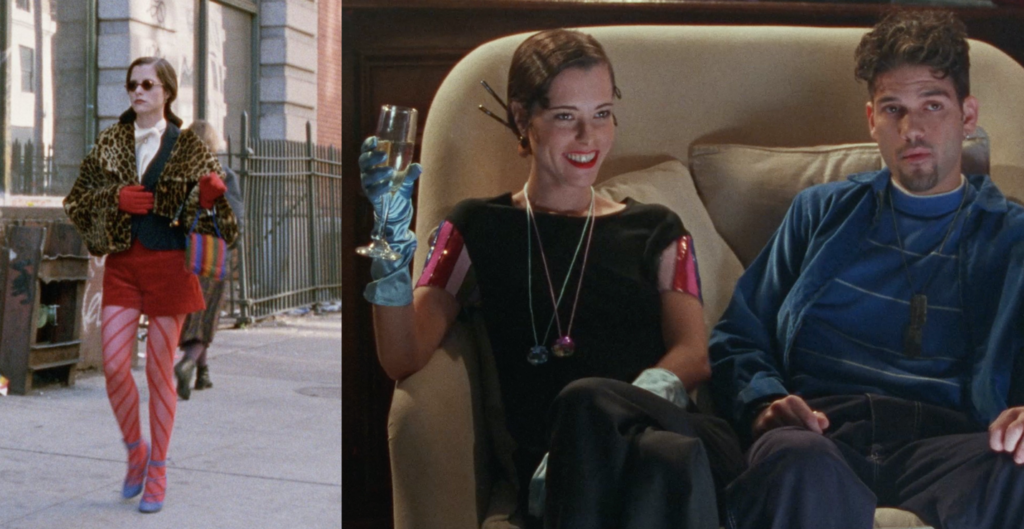
There are hints along the way, however, that Mary is suited to library work. In an early scene, Mary’s friend is going through a rack of clothing in Mary’s apartment, and she tells him multiple times that her jeans are in order and that she doesn’t want him mixing them up.
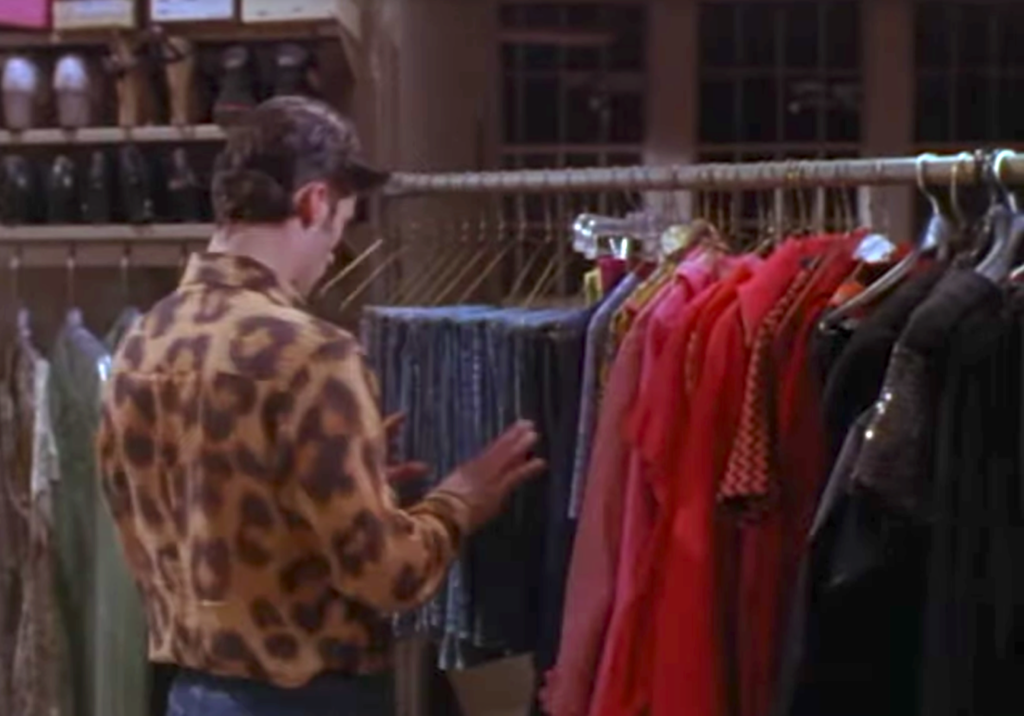
Later, she screams at a patron for reshelving a book in the wrong place. I can’t even tell you how many times I have wanted to do that.
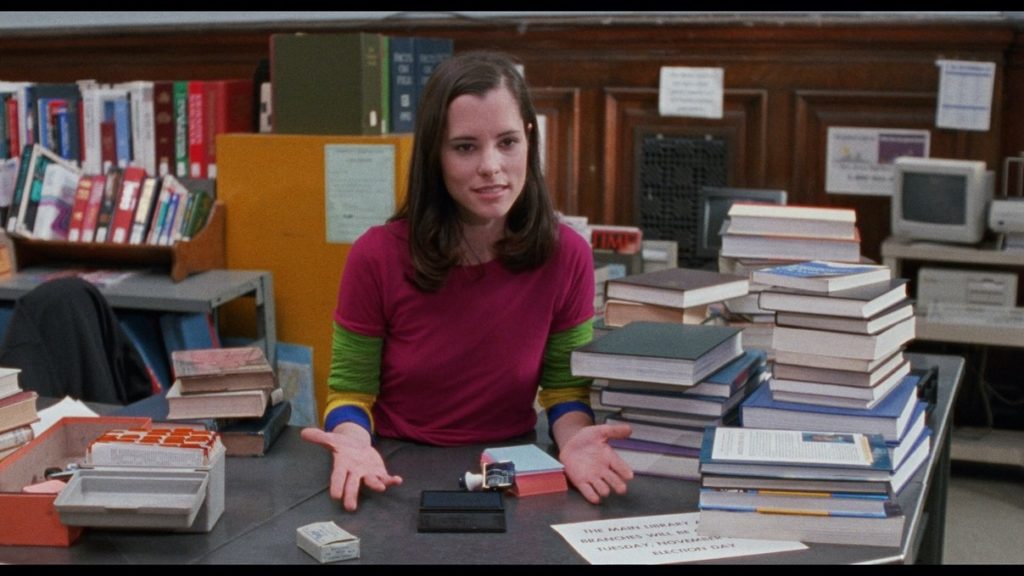
Finally, she reorganizes her DJ roommate’s record collection according to the Dewey Decimal system.
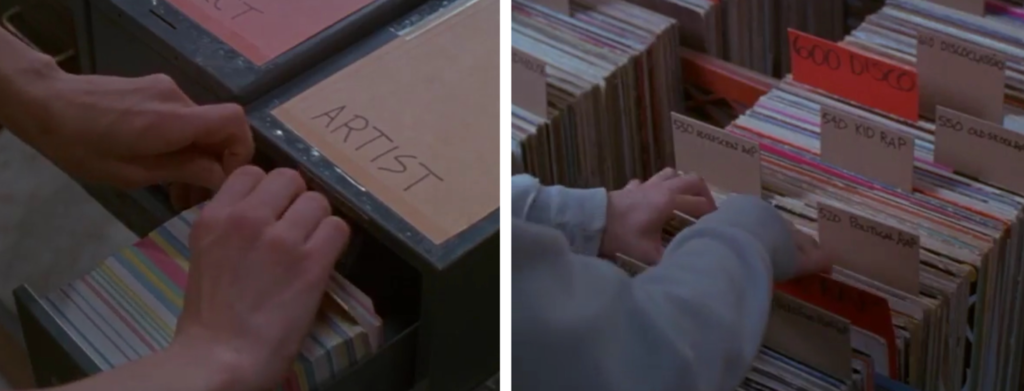
In the end, Mary transforms herself into the stereotype when she wants to prove to Judy that she’s serious about becoming a librarian.
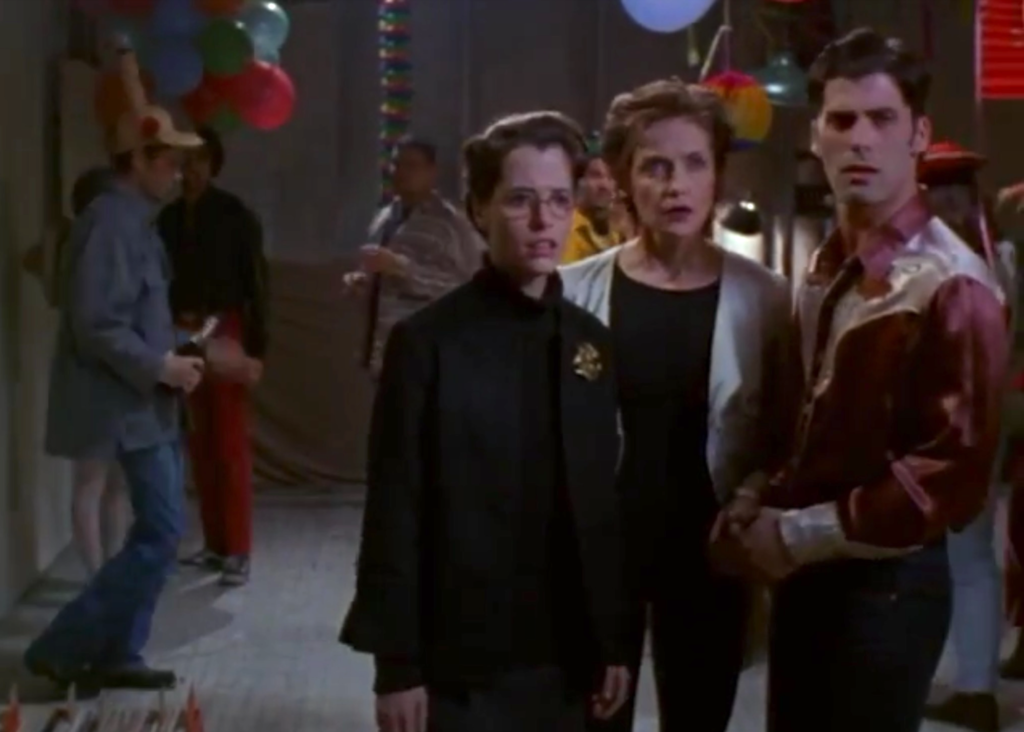
I find that librarians are somewhat divided in their feelings about Party Girl. Many of them love it but I think some others are uncomfortable with the ways that the film does reinforce stereotypes about librarians. I prefer to think of it as a celebration of those stereotypes. Unlike Michael Kors, I love what is traditionally considered librarian clothing style. I would wear that shirtdress that he hated so much. I have a closet full of cardigans and knee-length skirts and dresses.
One sticking point with librarians that I’m conflicted about is the scene in which Judy berates Mary for incorrectly cataloging a book. She claims that a monkey learned the Dewey Decimal system in a few hours. Nothing could be further from the truth. Cataloging is very complex. That task would never be given to a newbie library clerk. There is a reason that librarians have master’s degrees. Not just anyone can do the work that they do. I struggle with this scene like many other library people do, but I also feel like the scene isn’t really about cataloging. I see it as just another instance of Judy’s unreasonable, shaming treatment of Mary who stuck her with a task that she wasn’t trained to do just to prove once again what a flake Mary is.
We need to support libraries and librarians now more than ever. In 2021, attempts to ban books reached their highest level since the American Library Association (ALA) began collecting data on book banning.1 So, if you haven’t been to your local public library in a while (or ever), I highly recommend checking it out and thanking a librarian while you’re there.
NOTES
1 Harris, Elizabeth A., and Alexandra Alter. “Book Banning Efforts Surged in 2021. These Titles Were the Most Targeted.” N, 4 April 2022, https://www.nytimes.com/2022/04/04/books/banned-books-libraries.html
Edited by Olga Tchepikova-Treon
